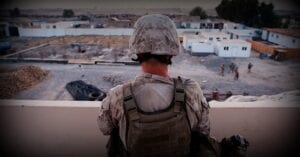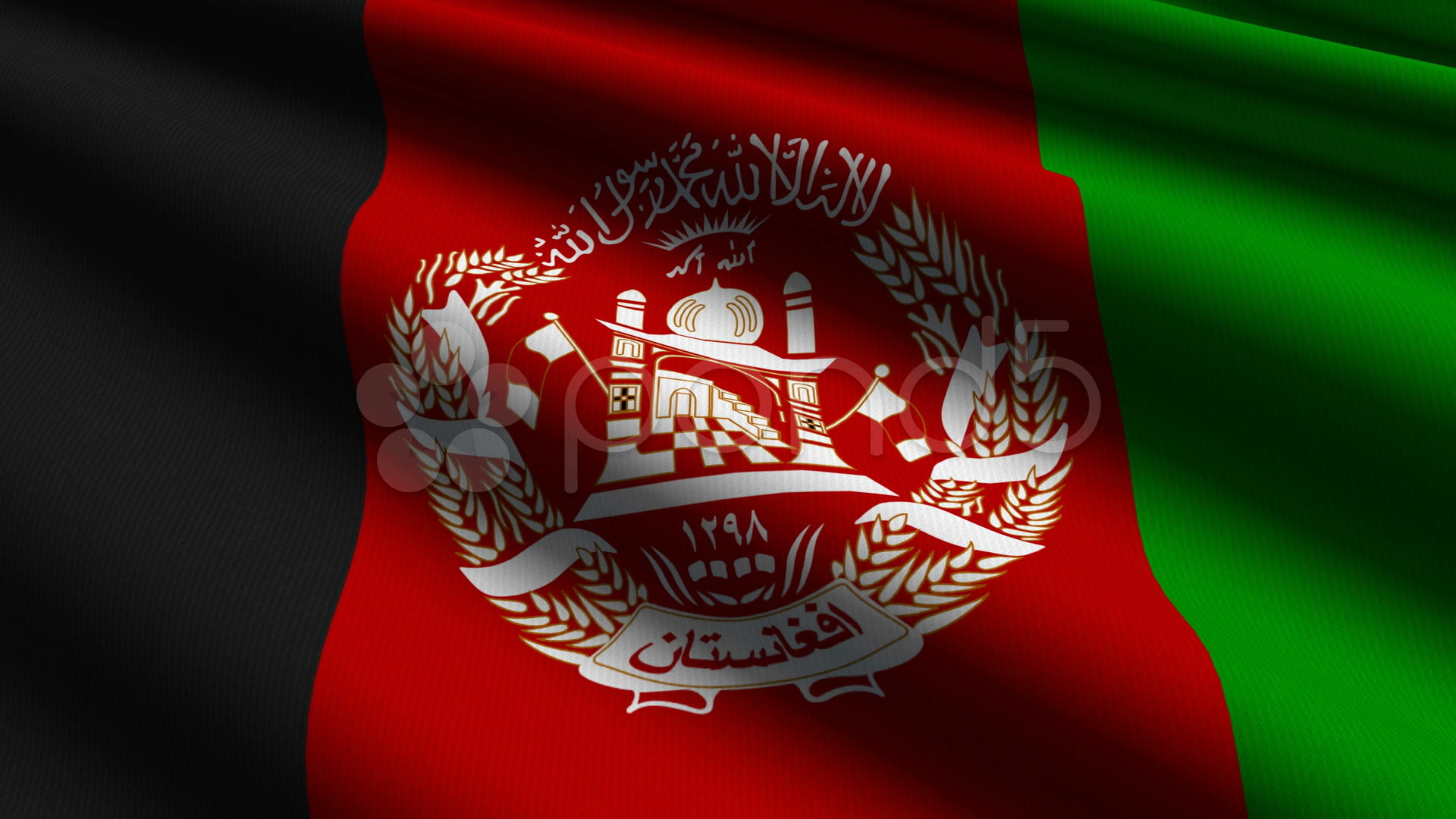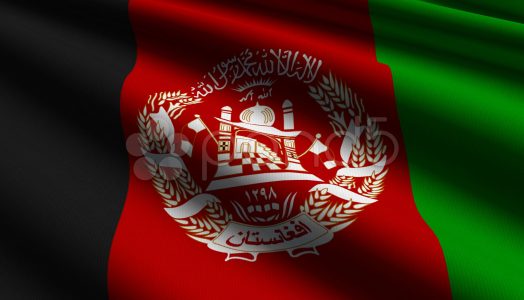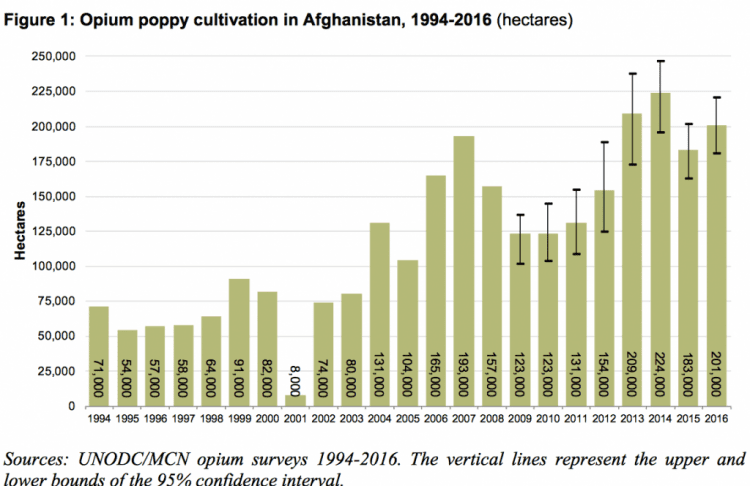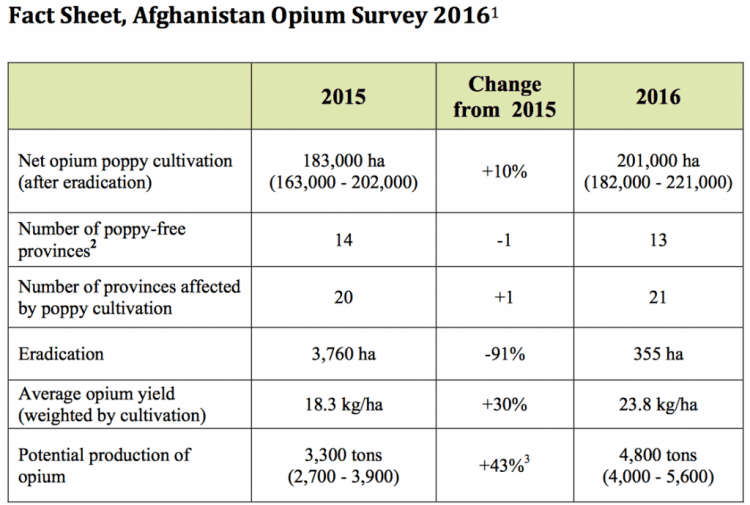It has the misfortune of sitting in a strategic position at the crossroads of Central Asia, the Indian subcontinent, and the Middle East. Despite its mountainous terrain and fiercely independent inhabitants, the country has been invaded time after time throughout its history. Today, Afghanistan is once more embroiled in war, pitting NATO troops and the current government against the ousted Taliban and its allies. Afghanistan is a fascinating but violence-wracked country, where East meets West. Afghanistan is an Islamic Republic, headed by the President. Afghan presidents may serve a maximum of two 5-year terms. Ashraf Ghani was elected in 2014. Hamid Karzai served two terms as president before him. The National Assembly is a bicameral legislature, with a 249-member House of the People (Wolesi Jirga), and a 102-member House of the Elders (Meshrano Jirga). The nine justices of the Supreme Court (Stera Mahkama) are appointed to terms of 10 years by the President. These appointments are subject to approval by the Wolesi Jirga.
Capital: Kabul, population 3,475,000 (2013 estimate)
- Kandahar, population 491,500
- Herat, 436,300
- Mazar-e-Sharif, 375,000
- Kunduz, 304,600
- Jalalabad, 205,000
The population of Afghanistan is estimated at 32.6 million.
Afghanistan is home to a number of ethnic groups. The largest is the Pashtun, 42 percent of the population. Tajiks make up 27 percent, Hazaras 8 percent, and Uzbeks 9 percent, Aimaks 4 percent, Turkmen 3 percent and Baluchi 2 percent. The remaining 13 percent are tiny populations of Nuristanis, Kizibashis, and other groups.
Life expectancy for both men and women within Afghanistan is 60 years. The infant mortality rate is 115 per 1,000 live births, the worst in the world. It also has one of the highest maternal mortality rates.
Official Languages:
Afghanistan’s official languages are Dari and Pashto, both of which are Indo-European languages in the Iranian sub-family. Written Dari and Pashto both use a modified Arabic script.Other Afghan languages include Hazaragi, Uzbek and Turkmen.
Dari is the Afghan dialect of the Persian language. It is quite similar to Iranian Dari, with slight differences in pronunciation and accent. The two are mutually intelligible. Around 33 percent of Afghanis speak Dari as their first language.
About 40 percent of the people of Afghanistan speak Pashto, the language of the Pashtun tribe. It is also spoken in the Pashtun areas of western Pakistan.
Religion:
The overwhelming majority of Afghanistan’s people are Muslim, around 99 percent. About 80 percent are Sunni, and 19 percent Shia.
The final one percent includes about 20,000 Baha’is, 3,000-5,000 Christians. Only one Bukharan Jewish man, Zablon Simintov, remained by 2005. All of the other members of the Jewish community fled when the Soviets invaded Afghanistan in 1979.
Until the mid-1980s, Afghanistan also had a population of 30,000 to 150,000 Hindus and Sikhs. During the Taliban regime, the Hindu minority was forced to wear yellow badges when they went out in public, and Hindu women had to wear the Islamic-style hijab. Today, only a few Hindus remain.
Geography:
Afghanistan is a land-locked country bordering on Iran to the west, Turkmenistan, Uzbekistan, and Tajikistan to the north, a tiny border with China at the northeast, and Pakistan to the east and south.
Its total area is 647,500 square kilometers (almost 250,000 square miles).
Most of Afghanistan is in the Hindu Kush Mountains, with some lower-lying desert areas. The highest point is Nowshak, at 7,486 meters (24,560 feet). The lowest is the Amu Darya River Basin, at 258 meters (846 feet).
An arid and mountainous country, Afghanistan has little cropland; a scant 12 percent is arable, and only 0.2 percent is under permanent crop-cover.
Climate:
The climate of Afghanistan is very dry and seasonal, with temperatures varying by altitude. Kabul’s average January temperature is 0 degrees Celsius (32 Fahrenheit), while noon temperatures in July often reach 38 Celsius (100 Fahrenheit). Jalalabad can hit 46 Celsius (115 Fahrenheit) in the summer.
Most of the precipitation that falls in Afghanistan comes in the form of winter snow. The nation-wide annual average is only 25-30 centimeters (10 to 12 inches), but snow drifts in the mountain valleys can reach depths of over 2 meters.
The desert experiences sandstorms, carried on winds moving at up to 177 kph (110 mph).
Economy:
Afghanistan is among the poorest countries on Earth. The per capita GDP is $1,900 US, and about 36 percent of the population live under the poverty line.
The economy of Afghanistan receives large infusions of foreign aid, totaling billions of U.S. dollars annually. It has been undergoing a recovery, in part by the return of over five million expatriates and new construction projects.
The country’s most valuable export is opium; eradication efforts have had mixed success. Other export goods include wheat, cotton, wool, handwoven rugs, and precious stones. Afghanistan imports much of its food and energy.
Agriculture employs 80 percent of the labor force, industry and services 10 percent each. The unemployment rate is 35 percent.
The currency is the afghani. As of 2016, $1 US = 69 afghani.
History of Afghanistan:
Afghanistan was settled at least 50,000 years ago. Early cities such as Mundigak and Balkh sprang up around 5,000 years ago; they likely were affiliated with the Aryan culture of India.
Around 700 B.C., the Median Empire expanded its rule to Afghanistan. The Medes were an Iranian people, rivals of the Persians. By 550 B.C., the Persians had displaced the Medians, establishing the Achaemenid Dynasty.
Alexander the Great of Macedonia invaded Afghanistan in 328 B.C., founding a Hellenistic empire with its capital at Bactria (Balkh). The Greeks were displaced around 150 B.C.
by the Kushans and later the Parthians, nomadic Iranians. The Parthians ruled until about 300 A.D., when the Sassanians took control.
Most Afghans were Hindu, Buddhist or Zoroastrian at that time, but an Arab invasion in 642 A.D. introduced Islam. The Arabs defeated the Sassanians and ruled until 870, at which time they were driven out again by the Persians.
In 1220, Mongol warriors under Genghis Khan conquered Afghanistan, and descendants of the Mongols would rule much of the region until 1747.
In 1747, the Durrani Dynasty was founded by Ahmad Shah Durrani, an ethnic Pashtun. This marked the origin of modern Afghanistan.
The nineteenth century witnessed increasing Russian and British competition for influence in Central Asia, in “The Great Game.” Britain fought two wars with the Afghans, in 1839-1842 and 1878-1880. The British were routed in the first Anglo-Afghan War but took control of Afghanistan’s foreign relations after the second.
Afghanistan was neutral in World War I, but Crown Prince Habibullah was assassinated for purported pro-British ideas in 1919. Later that year, Afghanistan attacked India, prompting the British to relinquish control over Afghan foreign affairs.
Habibullah’s younger brother Amanullah reigned from 1919 until his abdication in 1929. His cousin, Nadir Khan, became king but lasted only four years before he was assassinated.
Nadir Khan’s son, Mohammad Zahir Shah, then took the throne, ruling from 1933 to 1973. He was ousted in a coup by his cousin Sardar Daoud, who declared the country a republic. Daoud was ousted in turn in 1978 by the Soviet-backed PDPA, which instituted Marxist rule. The Soviets took advantage of the political instability to invade in 1979; they would remain for ten years.
Warlords ruled from 1989 until the Taliban took power in 1996. The Taliban regime was ousted by U.S.-led forces in 2001 supposedly for its support of Osama bin Laden and al-Qaeda. A new Afghan government was formed, supported by the International Security Force of the United Nations Security Council.
US Invasion of Afghanistan in 2001-Present
Endless US aggression in Afghanistan has nothing to do with combating terrorism (America supports it), everything to do with controlling the country, using it for oil and gas pipelines, part of encircling Russia and China with US military bases, and plundering vast Afghan mineral riches – likely worth trillions of dollars, a prize corporate predators covet. They include barite, chromite, coal, cobalt, copper, gold, iron ore, lead, enormous amounts of highly-valued lithium and other rare earth metals vital for high tech products, natural gas, oil, precious and semi-precious stones, potash, salt, sulfur, talc, zinc, among other minerals.
Pre-9/11, Taliban officials met with US oil giant Unocal in Houston regarding construction of a trans-Afghan pipeline. The 1999 US Silk Road Strategy Act aimed to develop US regional business opportunities, along with undermining, destabilizing, and isolating Russia, China and Iran – a new Great Game to control vital resources in this strategic part of the world. Clinton administration talks with Taliban officials broke off in 1999, resumed by Bush/Cheney, again ending unsuccessfully.
The rest, as they say, is history, 9/11 followed, four weeks later Afghanistan attacked, a war planned months in advance.
Another key reason for launching it was reviving opium production, largely eradicated by the Taliban, a key source of income for the CIA, Western banks and other financial interests, besides organized crime. The nation is a resource treasure trove, a key reason why US occupation is permanent, unjustifiably justified by war, the idea not winning it, just waging it endlessly, a forever war. Afghanistan’s opium economy is a multi-billion dollar operation which feeds the surge of the US heroin market which is currently the object of debate and public concern. In the course of the last decade, there has been a surge in Afghan opium production. In turn, the number of heroin addicts in the US has increased dramatically. Is there a relationship?
“There were 189,000 heroin users in the US in 2001, before the US-NATO invasion of Afghanistan. By 2016 that number went up to 4,500,000 (2.5 million heroin addicts and 2 million casual users). Heroin deaths shot up from 1,779 in 2001 to 10,574 in 2014 as Afghan opium poppy fields metastasized from 7,600 hectares in 2001 (when the US-NATO War in Afghanistan began) to 224,000 hectares in 2016. (One hectare equals approximately 2.5 acres). Ironically, the so-called US eradication operation in Afghanistan has cost an estimated $8.5 billion in American taxpayer funds since the US-NATO-Afghan war started in October 2001.” ( See the article by Sibel Edmonds, August 22, 2017)
Afghanistan produces over 90 percent of the opium which feeds the heroin market. In turn, the US is now sending more troops to Afghanistan. Lest we forget, the surge in opium production occurred in the immediate wake of the US invasion in October 2001, a year after the Taliban had banned Opium production. Who is protecting opium exports out of Afghanistan?
In 2000-2001, “the Taliban government –in collaboration with the United Nations– had imposed a successful ban on poppy cultivation. Opium production declined by more than 90 per cent in 2001. In fact the surge in opium cultivation production coincided with the onslaught of the US-led military operation and the downfall of the Taliban regime. From October through December 2001, farmers started to replant poppy on an extensive basis.” (quoted from article below)
The Vienna based UN Office on Drugs and Crime (UNODC) reveals that poppy cultivation in 2012 extended over an area of more than 154,000 hectares, an increase of 18% over 2011. A UNODC spokesperson confirmed in 2013 that opium production is heading towards record levels. In 2014 the Afghan opium cultivation hit a record high, according to the United Nations Office on Drugs and Crime’s 2014 Afghan Opium Survey.( See graph below). A slight decline occurred in 2015-2016.
War is good for business. The Afghan opium economy feeds into a lucrative trade in narcotics and money laundering.
According to the 2012 Afghanistan Opium Survey released in November 2012 by the Ministry of Counter Narcotics (MCN) and the United Nations Office on Drugs and Crime (UNODC). potential opium production in 2012 was of the order of 3,700 tons, a decline of 18 percent in relation to 2001, according to UNODC data.
There is reason to believe that this figure of 3700 tons is grossly underestimated. Moreover, it contradicts the UNOCD’s own predictions of record harvests over an extended area of cultivation.
While bad weather and damaged crops may have played a role as suggested by the UNODC, based on historical trends, the potential production for an area of cultivation of 154,000 hectares, should be well in excess of 6000 tons. With 80,000 hectares in cultivation in 2003, production was already of the order of 3600 tons.
It is worth noting that UNODC has modified the concepts and figures on opium sales and heroin production, as outlined by the European Monitoring Centre for Drugs and Drug Addiction (EMCDDA).
A change in UN methodology in 2010 resulted in a sharp downward revision of Afghan heroin production estimates for 2004 to 2011. UNODC used to estimate that the entire global opium crop was processed into heroin, and provided global heroin production estimates on that basis. Before 2010, a global conversion rate of about 10 kg of opium to 1 kg of heroin was used to estimate world heroin production (17). For instance, the estimated 4 620 tonnes of opium harvested worldwide in 2005 was thought to make it possible to manufacture 472 tonnes of heroin (UNODC, 2009a). However, UNODC now estimates that a large proportion of the Afghan opium harvest is not processed into heroin or morphine but remains ‘available on the drug market as opium’ (UNODC, 2010a). …EU drug markets report: a strategic analysis, EMCDDA, Lisbon, January 2013 emphasis added
 There is no evidence that a large percentage of opium production is no longer processed into heroin as claimed by the UN. This revised UNODC methodology has served, –through the outright manipulation of statistical concepts– to artificially reduce the size of of the global trade in heroin.
There is no evidence that a large percentage of opium production is no longer processed into heroin as claimed by the UN. This revised UNODC methodology has served, –through the outright manipulation of statistical concepts– to artificially reduce the size of of the global trade in heroin.
According to the UNODC, quoted in the EMCDDA report:
“an estimated 3 400 tonnes of Afghan opium was not transformed into heroin or morphine in 2011. Compared with previous years, this is an exceptionally high proportion of the total crop, representing nearly 60 % of the Afghan opium harvest and close to 50 % of the global harvest in 2011.
What the UNODC, –whose mandate is to support the prevention of organized criminal activity– has done is to obfuscate the size and criminal nature of the Afghan drug trade, intimating –without evidence– that a large part of the opium is no longer channeled towards the illegal heroin market.
In 2012 according to the UNODC, farmgate prices for opium were of the order of 196 per kg.
Each kg. of opium produces 100 grams of pure heroin. The US retail prices for heroin (with a low level of purity) is, according to UNODC of the order of $172 a gram. The price per gram of pure heroin is substantially higher.
The profits are largely reaped at the level of the international wholesale and retail markets of heroin as well as in the process of money laundering in Western banking institutions.
The revenues derived from the global trade in heroin constitute a multibillion dollar bonanza for financial institutions and organized crime.
In a 2017 interview, Doug Valentine, author of ‘The CIA as Organized Crime’, explained the Afghanistan Invasion and war:
In Afghanistan, CIA officers manage the drug trade from their hammocks in the shade. Opium production has soared since they created the Karzai government in 2001-2 and established intelligence networks into the Afghan resistance through “friendly civilians” in the employ of the opium trafficking warlord, Gul Agha Sherzai. The American public is largely unaware that the Taliban laid down its arms after the American invasion, and that the Afghan people took up arms only after the CIA installed Sherzai in Kabul. In league with the Karzai brothers, Sherzai supplied the CIA with a network of informants that targeted their business rivals, not the Taliban. As Anand Gopal revealed in No Good Men Among the Living, as a result of Sherzai’s friendly tips, the CIA methodically tortured and killed Afghanistan’s most revered leaders in a series of Phoenix-style raids that radicalized the Afghan people. The CIA started the war as a pretext for a prolonged occupation and colonization of Afghanistan.
In return for his services, Sherzai received the contract to build the first US military base in Afghanistan, along with a major drug franchise. The CIA arranged for its Afghan drug warlords to be exempted from DEA lists. All this is documented in Gopal’s book. The CIA officers in charge watch in amusement as addiction rates soar among young Afghan people whose parents have been killed and whose minds have been damaged by 15 + years of US aggression. They don’t care that the drugs reach America’s inner cities, for all the economic, social, and political reasons cited above.
The drug trade also has “intelligence potential”. CIA officers have an accommodation with the protected Afghan warlords who convert opium into heroin and sell it to the Russian mob. It’s no different than cops working with Mafia drug dealers in America; it’s an accommodation with an enemy that ensures the political security of the ruling class. The accommodation is based on the fact that crime cannot be eradicated, it can only be managed.
The CIA is authorized to negotiate with the enemy, but only if the channels are secure and deniable. It happened during the Iran Contra scandal, when President Reagan won the love of the American people by promising never to negotiate with terrorists, while his two-faced administration secretly sent CIA officers to Tehran to sell missiles to the Iranians and use the money to buy guns for the drug dealing Contras. In Afghanistan, the accommodation within the drug underworld provides the CIA with a secure channel to the Taliban leadership, with whom they negotiate on simple matters like prisoner exchanges. The criminal-espionage underworld in Afghanistan provides the intellectual space for any eventual reconciliation. There are always preliminary negotiations for a ceasefire, and in every modern American conflict that’s the CIA’s job. Trump, however, is going to prolong the occupation indefinitely.
The fact that 600 subordinate DEA agents are in Afghanistan makes the whole thing plausibly deniable.
***
Afghanistan is a case study of the standard two-tiered Phoenix program developed in South Vietnam. It’s guerrilla warfare targeting “high value” cadre, both for recruitment and assassination. That’s the top tier. It’s also psychological warfare against the civilian population – letting everyone know they will be kidnapped, imprisoned, tortured, extorted and/or killed if they can be said to support the resistance. That’s the second tier – terrorizing the civilians into supporting the US puppet government.
The US military resisted being involved in this repugnant form of warfare (modeled on SS Einsatzgruppen-style special forces and Gestapo-style secret police) through the early part of the Vietnam War, but got hooked into providing soldiers to flesh out Phoenix. That’s when the CIA started infiltrating the military’s junior officer corps. CIA officers Donald Gregg (featured by the revisionist war monger Ken Burns in his Vietnam War series) and Rudy Enders (both of whom I interviewed for my book The Phoenix Program), exported Phoenix to El Salvador and Central America in 1980, at the same time the CIA and military were joining forces to create Delta Force and the Joint Special Operations Command to combat “terrorism” worldwide using the Phoenix model. There are no more conventional wars, so the military, for economic and political reasons, has become, under the junior officer corps recruited by the CIA years ago, the de-facto police force for the American empire, operating out of 700 + bases around the world.
Record Production in 2016. Fake Eradication Program
According to the YNODC:
“Opium production in Afghanistan rose by 43 per cent to 4,800 metric tons in 2016 compared with 2015 levels, according to the latest Afghanistan Opium Survey figures released today by the Afghan Ministry of Counter Narcotics and the UNODC. The area under opium poppy cultivation also increased to 201,000 hectares (ha) in 2016, a rise of 10 per cent compared with 183,000 ha in 2015.
This represents a twentyfold increase in the areas under opium cultivation since the US invasion in October 2001. In 2016, opium production had increased by approximately 25 times in relation to its 2001 levels, from 185 tons in 2001 to 4800 tons in 2016.
Sources: GlobalResearch.ca 1; GlobalResearch 2; ThoughtCo
https://www.youtube.com/watch?v=jUvgnt-cOqI
Chronology of Afghanistan Related Events below:

Former Obama Official Pleads Guilty To Charges He Illegally Tried to Influence Trump Administration
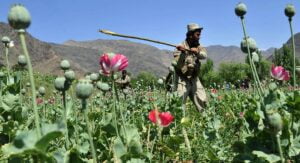
Taliban outlaw the production of poppies in Afghanistan
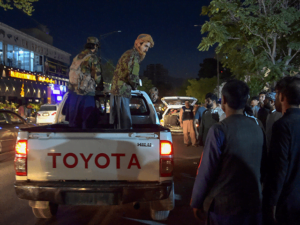
Kabul Airport Bombings: Largest 1-Day Loss of U.S. Soldiers’ Lives in Afghanistan Since 2011
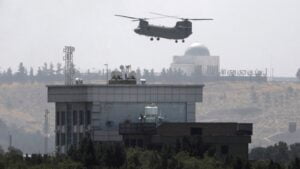
Fall of Afghanistan
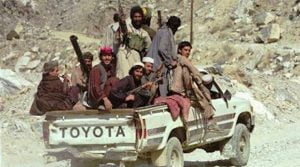
Trump Admin Declassifies Intelligence that Indicates China Offered to Pay Non-State Actors in Afghanistan to Attack US Soldiers
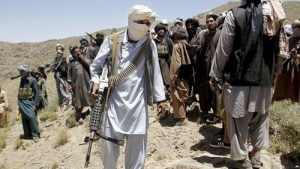
Report: Two Decades After 9/11, Pentagon Is Providing Covert Air Support To The Taliban
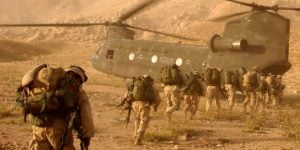
NY Times Starts Fake News About Russian Bounties
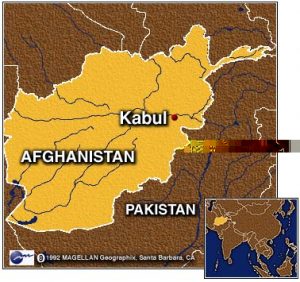
US, Afghan Forces Come Under ‘Direct Fire’ In Eastern Afghanistan

Classified Docs ‘Afghanistan Papers’ Give “Undeniable Evidence” Afghan War was a Mass Deception
